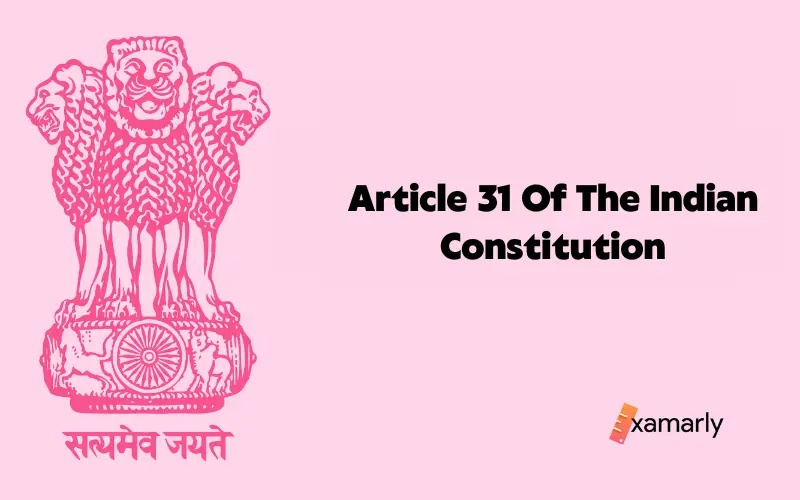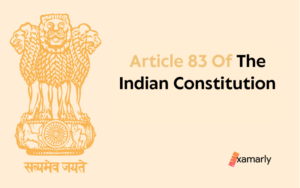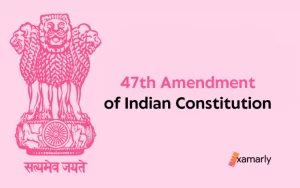The Indian Constitution protects the fundamental rights of people and the right to property under Articles 19 and 31 was an aspect of it. These fundamental rights are protected by the fundamental law of the land or the Constitution. Previously, the right to property under Articles 19 and 31 was a fundamental right but now is a human right and a constitutional right.
Let us try to understand Article 31 of the Indian Constitution closely along with its features, subclauses, and provisions associated with them.
- Article 31 Of The Indian Constitution: The Right For Compulsory Acquisition Of Property
- Features Of Article 31 Of The Indian Constitution
- Subclauses Of Article 31 Of The Indian Constitution
- Provisions In Article 31 Of The Indian Constitution
- Amendments That Are Related To Article 31 Of The Indian Constitution
- Summing Up
- FAQs
Article 31 Of The Indian Constitution: The Right For Compulsory Acquisition Of Property
- Article 31 of the Indian Constitution deals with property rights and is commonly known for the compulsory acquisition of property. The right to property was one of the seven fundamental rights enshrined in the Indian Constitution, initially.
- Article 31 provided that no citizen of the nation can be kept away from owning their property by any power. The only exception was the authority of law. Any person would be eligible to receive compensation if their property was held for public purposes.
- This was one of the most debated rights of the Constitution. The right to property was eliminated from the category of fundamental rights. This was possible due to the Constitution (44th Amendment) Act, 1978. Instead, an amendment of Article 31 was done to make it a legal right or a constitutional right. Article 300A in Chapter IV in Part XII of the Indian Constitution holds this right.
Features Of Article 31 Of The Indian Constitution
- Article 31 paved the way for several Constitutional amendments such as the 1st, 4th, 7th, 25th, 39th, 40th and 42nd Amendments of the Indian Constitution.
- Article 31 has three subclauses at present, namely- Articles 31A, 31B, and 31C. These have been continued despite their deviation from fundamental rights.
- Subclause 31D was eliminated from the Indian Constitution by the Constitution (43rd Amendment0 Act,1977.
Subclauses Of Article 31 Of The Indian Constitution
Article 31 of the Indian Constitution has three subclauses, namely- Articles 31A, 31B, and 31C. Each of the three subclauses has been briefly mentioned below.
Article 31A
- This article is primarily for the saving of laws that promote the acquisition of estates.
- Articles 14 and 19 of the Indian Constitution guarantee certain fundamental rights to the citizens. Article 31A protects five classes of laws from being contested and declared unconstitutional on the grounds that they violate the fundamental rights granted by the former articles.
- It was introduced in the Indian Constitution by the Constitution (1st Amendment) Act, 1951.
Article 31B
- This article is concerned with the validation of certain acts and regulations.
- Article 31B safeguards the acts and laws that are part of the 9th Schedule. This article protects these from being questioned and termed invalid on the accusation of violating any of the fundamental rights.
- Similar to Article 31A, this article was added to the Indian Constitution by the Constitution (1st Amendment) Act, 1951.
Article 31C
- This article serves to help in saving laws that give effect to certain directive principles.
- Article 31C holds provisions that are concerned with the protection of regulations that help to implement certain directive principles.
- It was added to the Indian Constitution by virtue of the Constitution (25th Amendment) Act, 1971.
Article 31D
- This article deals with the protection of laws in matters of anti-nationalist activities.
- It was not a part of the Constitution of India, 1950. The Constitution (42nd Amendment) Act,1976, added it to the Indian Constitution. However, sometime later, the Constitution (43rd Amendment) Act,1977, removed it from the Indian Constitution.
Provisions In Article 31 Of The Indian Constitution
Let us study in detail the provisions that are held by the subclauses of Article 31 of the Indian Constitution.
Article 31A
The following are the provisions that are granted by Article 31A of the Indian Constitution:
- The State has the authority of the acquisition of estates and their related rights;
- The State has the right of controlling the administration of properties;
- The merging of corporations;
- Withdrawing or revising the rights enjoyed by the directors and shareholders in corporations; and
- Terminating or amending the leases of mining.
- In addition to that, it protects the right to compensation. It applies to compensation in cases where the government seizes or requisitions private property.
Article 31B
- Article 31B covers a larger scope as compared to Article 31A. It shields any regulation that is a part of the 9th Schedule from fundamental rights. This is unlike Article 31A which protects only five categories of laws.
- However, the Supreme Court held that even laws under the 9th Schedule would be open to challenge if they infringed Fundamental Rights or the basic structure of the Constitution. It passed this judgment in the I.R. Coelho case in 2007.
Article 31C
Article 31C contains only two provisions. They are as follows:
- Articles 39 (b) and (c) hold the Socialistic Directive Principles specified in Part IV of the Indian Constitution. According to Article 31C, no law that aims to carry out these principles can be deemed unlawful based on the reason that it breaches the fundamental rights guaranteed by Article 14 or 19. Article 14 talks about equality before law and equal protection of laws. Article 19 deals with the protection of six rights in respect of freedom of speech, assembly, movement, etc.
- Likewise, any law that clearly states that it is intended to give effect to a policy cannot be challenged in court. The reason to question it is that it fails to give effect to such a policy.
Related – Emergence of Article 31 A, B and C and its validity
Amendments That Are Related To Article 31 Of The Indian Constitution
- As mentioned before, Article 31 led to several Constitutional amendments; 1st, 4th, 7th, 25th, 39th, 40th and 42nd Amendment.
- The Constitution (1st Amendment) Act, 1951, was responsible for introducing Articles 31A and 31B to the Indian Constitution.
- The Constitution (25th Amendment) Act, 1971, added Article 31C to the Indian Constitution.
- The Constitution (42nd Amendment) Act,1976, added Article 31D to the Indian Constitution and it was removed by the Constitution (43rd Amendment) Act,1977.
Summing Up
- The Indian Constitution allows the enforcement of constitutional amendments as a step toward the social welfare and betterment of the sections of society. It ensures that all classes of citizens enjoy equality of opportunity and treatment, irrespective of whether they come from the working class or weaker sections of society.
- The right to property became one of the most controversial rights under the Indian Constitution. The property law has been losing relevance after Article 31 was challenged as being unconstitutional.
- Article 31 was changed from a fundamental right to a constitutional right by making it a part of Article 300A of the Indian Constitution.
FAQs
Q. Does Article 31 of the Indian Constitution fall under fundamental rights?
Article 31 is now a constitutional right and not a fundamental right.
Q. Which subclause of Article 31 no longer exists?
The Constitution (43rd Amendment) Act, 1977, removed Article 31D from the Indian Constitution.
Q. Which right was removed from the list of fundamental rights in India?
The right to property was removed as the 7th fundamental right in India by the Constitution (44th Amendment) Act, 1978.






